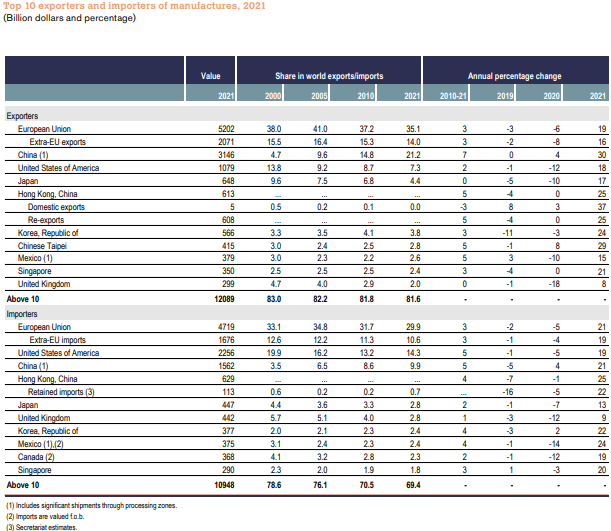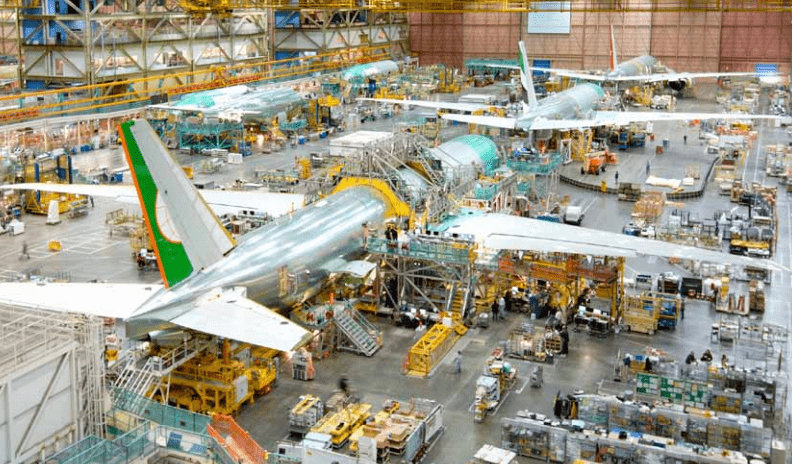The European Union, China and the United States ranked as the world’s top manufacturing exporters in 2021, according to WTO data.
With a 19% year-on-year increase, the European Union’s external manufacturing sales were US$5.202 trillion.
Its exports outside the bloc totaled 2 trillion 071 billion dollars.

This was followed by China (3 trillion 146 billion dollars) and the United States (1 trillion 079 billion dollars).
While manufacturing is a massive, highly fragmented and regionalized industry that needs solutions to drive efficiency, global manufacturing is one of the largest industries in the world.
Manufacturing exporters
Xometry believes that the industry is poised for further digitization through a number of global thematic shifts, including increased demand for production, new manufacturing technologies and changing value chains, but needs solutions to drive efficiencies and create opportunities from these dynamics.
In addition, the manufacturing industry is largely made up of small and medium-sized manufacturers, and Xometry believes there are significant barriers to entry for these companies, which have to compete with larger-scale, better-resourced manufacturers.
Other notable manufacturing exporters include Japan, Hong Kong, South Korea, Taiwan, Mexico, Singapore and the United Kingdom.
Xometry is an AI-enabled digital manufacturing marketplace that is transforming one of the world’s largest industries.
The company uses its proprietary technology to create a marketplace that enables buyers to efficiently source fabricated parts and assemblies, and allows manufacturing service sellers to grow their businesses.
Sourcing manufacturing opportunities is a complex, costly and time-consuming process.
Even for the most sophisticated buyers and sellers, the sourcing and procurement process for manufactured products is complex, uncertain, costly and time-consuming.
Xometry assesses that the labor-intensive sourcing process represents a significant opportunity as buyers and sellers seek more efficient ways to source demand and consume production.
There is a significant opportunity to help companies around the world improve their supply chain diversification, access just-in-time production and strengthen supply chain resilience.
The Covid-19 pandemic and geopolitical instability have highlighted the urgent need for resilient and localized supply chains.
![]()

